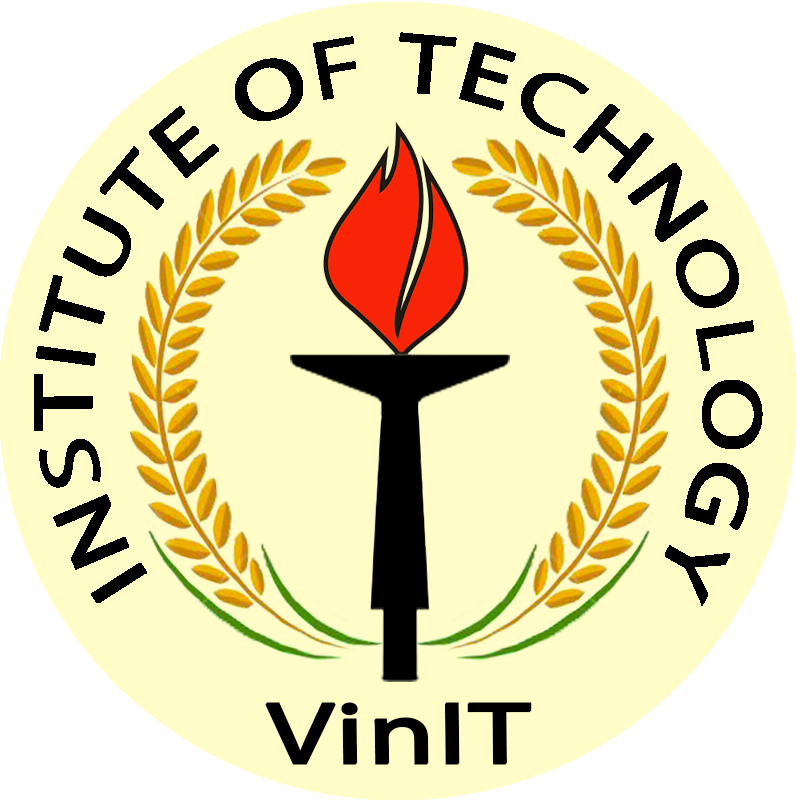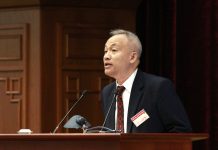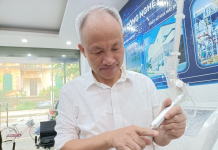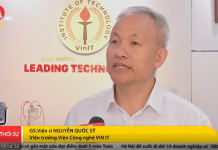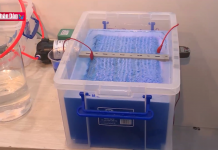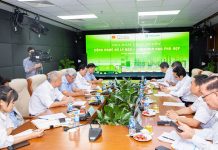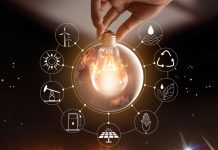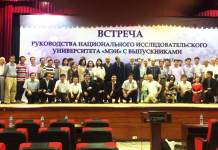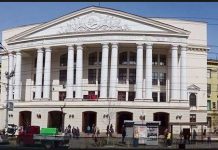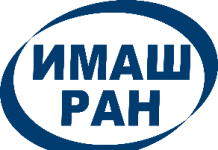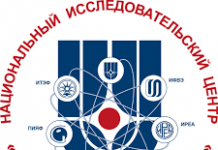Under the Russian-Vietnamese friendship crossover program, the two sides focused on developing various fields of cooperation. Including scientific research. A good example of cooperation in this area is the activities of the Vietnam – Russia research group in the
VinIT Institute of Technology under the Vietnam Union of Science and Technology Associations.
The founder and director of VinIT Institute of Technology are Mr. Nguyen Quoc Sy. In the past 35 years, he has lived and conducted research activities in both Vietnam and Russia. Physicist, Professor Nguyen Quoc Sy is the Head of Plasma Laboratory of
Moscow Power Engineering Institute.

He invited dozens of Russian colleagues interested in research topics proposed by him to participate in joint activities with Vietnamese scientists in VinIT. Including experts from Moscow Power Engineering University, from the Nuclear Research Center “Kurchatov Institute”, from the Institute of Physics-Engineering and the Electricity Institute in St. Petersburg, from the Institute of paleontology of the Russian Academy of Sciences.
“We have built a psychological atmosphere in the collective,” said Professor Shi Nguyen-Kuok in Sputnik’s interview.

“We are doing some science projects. For example, the problem of water treatment – to have drinking water and industrial water used, as well as filtering water before supplying it to shrimp ponds”
There is an interesting project of using cold plasma in combination with lasers to treat open wounds and cuts. Pilot equipment is ready, we are about to prepare technical documentation. As expected, in the next 2-3 months, this device will start to be mass-produced – there are many people who want to buy our device.

An extremely important project is environmental protection and waste recycling. Every day Vietnam discharges a lot of waste. For example, Hanoi daily generates more than 8
thousand tons of municipal solid waste, and Ho Chi Minh City – 12 thousand tons. We have come to the conclusion that both burial and burning waste are not suitable for Vietnam. For landfill, there must be a large area of land, which is not available in Vietnam. Regarding the incineration method, it must be said that, because in Vietnam there is no waste sorting system before being disposed of, in the process of incineration, there are many toxic pollutants, including toxic gas at the high concentration can be lethal. The problem of municipal solid waste disposal can only be solved by plasma gasification.

Participating in this new technology study is Associate Professor Yuri Malakhov from Moscow Power Engineering Institute. In Sputnik’s interview, he said:
“Waste treatment by plasma gasification requires less investment than standard incineration. Gasification by plasma occurs at much higher temperatures – more than 1500 degrees C. In this process, waste turns into syngas not only harmless to humans but can also be used as fuel to generate electricity. We have developed a complex that includes a small gas-plasma plant and a mini gas-fired thermal power plant. 60% of the electricity generated will be used in gasification by plasma and 40% of electricity can be supplied to other consumers.
Two years ago, Russian and Vietnamese scientists gained great success when introducing this technology in Hanoi and some provinces of Vietnam. Many Vietnamese entrepreneurs show great interest in it.

Professor Nguyen Quoc Sy said:
“Since then, we have designed alternating current plasmatron with a capacity of up to 500 kW. Now plasmatron in the testing phase, this device is located in the battery factory. We plan to build a full-scale thermal power plant. There are first orders from Vietnam. We are willing to accept orders from both Vietnam and Russia, but in Russia waste disposal is also a very serious problem.
Another project that scientists of the two countries are carrying out in 4 consecutive years is preserving the architectural works in My Son.

Professor Nguyen Quoc Sy said:
“This project has no special funding. The work is being done with enthusiasm. Russian scientists went to My Son during their vacation, and sponsored these trips themselves. Only friends and colleagues help us. However, it is very important to have the support of the Government of Vietnam and the local government. We were granted the right to work freely in My Son, no one intervened in our work. The customs authorities admitted to us to bring My Son bricks to Russia to study and then bring them back. ”

For example, experts from the Institute of Paleontology of the Russian Academy of Sciences in Moscow studied My Son bricks and tile adhesive materials by infrared and electronic spectroscopy methods, with the help of Special X-ray equipment, CT scan. This is the fifth time, Dr. Alexey Pakhnevich, senior researcher at the Institute of Paleontology, set out for My Son. In Sputnik’s interview, he said:
“My Son Sanctuary was chosen by UNESCO as one of the World Heritage Sites, subject to number 949. But, unfortunately, this fact does not slow itself down. Scientific researchs from many countries cannot slow this process. And if you don’t start to solve the problem right now, then future generations won’t see My Son. That’s why our Russian-Vietnamese research team participated in this project. The research was conducted in Moscow, and the experiments – in My Son. We have achieved encouraging results about the mineral composition and structure of the ancient bricks. We have approximate the firing temperature of bricks and which plants have been used for firing bricks. However, we have not even reached the middle of the road, there is still much work to do. For example, it is necessary to clarify which substances have been used to bind bricks. And which substances can be used most effectively against moss, lichen, and floods that destroy My Son ”.
In the framework of the program of VinIT, scientists from Russia and Vietnam not only participate in practical projects but also study basic science issues. Professor Sergei Popov, senior expert from Institute of Electrical and Electrical Engineering of the Russian Academy of Sciences in St. Petersburg said in Sputnik’s interview.
Professor Popov said:
“One of Einstein’s main theory says that the maximum speed of a photon in a vacuum, that is, the speed of light is 300 000 km/s. However, our research team sent photons flying through a heated tube and recorded their speed by more than a third, meaning 400,000 km/s. Recently, several other laboratories around the world have recorded similar results. But, scientists cannot explain this phenomenon theoretically. So we are trying to argue with Einstein. “
Resource: vn.sputniknews.com
